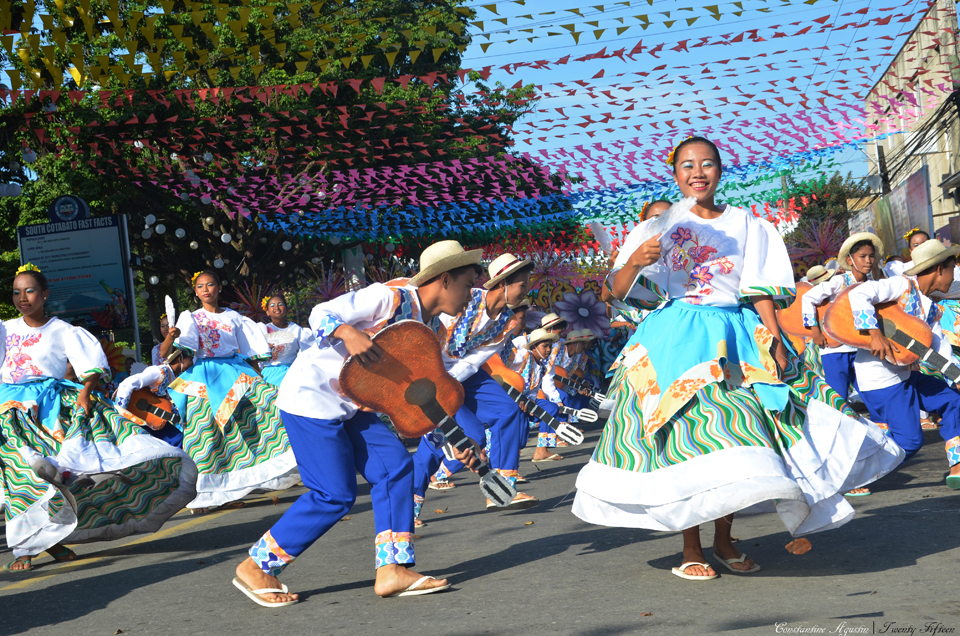The T’nalak Festival also commemorates the works of Lang Dulay, a T’boli princess from Lake Sebu who was the best weaver of her time.
 The festival gets its name from “t’nalak,” a colorful abaca cloth, created and woven by the women of the T’boli tribe of South Cotabato. The design of the cloth is unique and “dreamed up” by the person who creates it. That’s why the province is known as “The Land of the Dreamweavers.” The T’nalak fabric serves as the festival icon because it symbolizes the blending of the culture, strength, and unity of the various ethnic groups living in the province.
The festival gets its name from “t’nalak,” a colorful abaca cloth, created and woven by the women of the T’boli tribe of South Cotabato. The design of the cloth is unique and “dreamed up” by the person who creates it. That’s why the province is known as “The Land of the Dreamweavers.” The T’nalak fabric serves as the festival icon because it symbolizes the blending of the culture, strength, and unity of the various ethnic groups living in the province.
 The story behind the design of the weave is rather interesting. In fact, the design is supposed to be dreamed by the person creating it, which is why this entire province is commonly known as the Land of Dreamweavers. And that’s why the fabric is the symbol of the festival – it represents the blending and unity of all the different cultures and ethnicities that live on the island.
The story behind the design of the weave is rather interesting. In fact, the design is supposed to be dreamed by the person creating it, which is why this entire province is commonly known as the Land of Dreamweavers. And that’s why the fabric is the symbol of the festival – it represents the blending and unity of all the different cultures and ethnicities that live on the island.
A Grand Parade is usually held on the first day of the week-long festival wherein they showcase the cultures of the tribal communities and indigenous people from South Cotabato, including the B’laan and T’boli. There is a plethora of different events and competitions held throughout the rest of that week such as the Fun Run, the Bahay-Kubo (Nipa Hut) Competition, TinaRock: A Night of Rock Music, and the Cheer Dance Competition.
According to expertworldtravel.com and caremin.com













